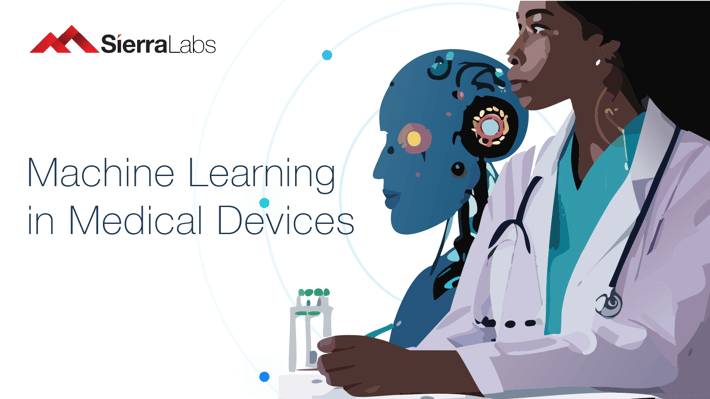FDA Releases Guidance On Predetermined Change Control Plans for Machine Learning-Enabled Medical Devices

The Dawn of AI-Enhanced Healthcare:
The healthcare sector is undergoing a transformative shift with the integration of artificial intelligence (AI) and machine learning (ML) technologies. This advancement brings forth a new era of medical devices – machine learning-enabled medical devices (MLMDs). Recognizing the potential and challenges of these technologies, the FDA, Health Canada, and the UK's MHRA have collaboratively developed guiding principles to steer the safe and effective integration of AI and ML in healthcare.
The Promise of AI and ML in Medical Devices:
AI and ML technologies promise significant enhancements in medical diagnostics and treatment, offering more personalized, efficient, and accurate healthcare solutions. However, these advancements also present unique challenges, particularly in ensuring the safety, efficacy, and reliability of these technologies.
As MLMDs evolve rapidly, ensuring their safety and effectiveness becomes a complex challenge. This is where Predetermined Change Control Plans (PCCPs) come into play. PCCPs serve as a regulatory tool to manage changes in MLMDs, aligning the fast-paced technological evolution with the rigorous standards required for medical devices.
Given the significant changes MLMDs undergo post-deployment, such as algorithm updates or model improvements, PCCPs provide a structured approach to manage these changes under regulatory oversight. This is vital to maintain the device's integrity and trustworthiness throughout its Total Product Lifecycle (TPLC).
In-Depth Analysis of the Five Guiding Principles
-
Focused and Bounded Approach:
- Defining Scope and Boundaries: A PCCP must clearly define the scope of permissible changes, ensuring they align with the original intent of the MLMD. This principle safeguards against deviations that could compromise the device's purpose or safety.
- Verifying and Validating Changes: Critical to this principle is the establishment of rigorous methods for verifying and validating changes, ensuring they meet predefined performance criteria.
- Defining Scope and Boundaries: A PCCP must clearly define the scope of permissible changes, ensuring they align with the original intent of the MLMD. This principle safeguards against deviations that could compromise the device's purpose or safety.
-
Risk-Based Approach Across TPLC:
- Continual Risk Management: Emphasizing a risk-based approach throughout the device's lifecycle ensures that changes are not only safe at the time of implementation but remain so throughout the device's use.
- Responsiveness to Evolving Risks: This approach allows for continuous adaptation to new challenges and environments, ensuring the device remains effective and safe under varying conditions.
-
Evidence-Based Decision Making:
- Ensuring Ongoing Safety and Effectiveness: Robust evidence is essential to demonstrate that changes enhance the device's safety and effectiveness, outweighing any associated risks.
- Maintaining a Scientific and Clinical Basis: The principle mandates that all modifications are grounded in scientifically and clinically justified methodologies.
-
Transparency with Users and Stakeholders:
- Building and Maintaining Trust: Clear communication about changes and their impact is crucial for maintaining trust among users and stakeholders.
- Engagement and Understanding: Transparency fosters a better understanding of the evolving nature of MLMDs, promoting acceptance and confidence in these technologies.
-
Adopting a TPLC Perspective:
- Stakeholder Engagement Throughout the Lifecycle: The TPLC perspective involves continuous consideration of stakeholder perspectives, ensuring that quality and safety are maintained across all stages.
- Integrating with Regulatory and Risk Management Practices: This principle underscores the importance of existing regulatory measures, emphasizing their role in ensuring ongoing monitoring and management of safety concerns.
Fostering Global Standards in Digital Health:
The collaborative effort in formulating these guiding principles exemplifies the need for global standards in the rapidly evolving digital health sector. This international partnership aims to harmonize regulatory approaches, ensuring consistency and safety in the development and deployment of MLMDs. Harmonized standards facilitate smoother development and approval processes for MLMDs across borders, encouraging innovation while maintaining patient safety and device efficacy. The principles are designed to evolve with technological advancements, with regulatory bodies actively seeking feedback and engagement from the global community to continuously refine these standards.
Future Outlook: Balancing Innovation and Safety
The guiding principles set by the FDA, Health Canada, and the MHRA mark a significant milestone in the integration of AI and ML in healthcare. They represent a balanced approach, fostering innovation in medical technology while prioritizing patient safety. These principles pave the way for responsible and safe integration of advanced technologies in healthcare, enhancing the quality and effectiveness of medical interventions. The emphasis on continual feedback and adaptation reflects the dynamic nature of technology, ensuring that regulatory practices keep pace with innovation.
A New Era in Medical Device Regulation
In conclusion, as medical device developers navigate the complexities of integrating AI and machine learning into their products, Sierra Labs stands ready to assist in the formulation of effective Predetermined Change Control Plans (PCCPs). Our expertise in technology and healthcare positions us uniquely to guide developers through the intricacies of PCCP development, ensuring compliance with regulatory standards while fostering innovation. From initial concept to final deployment, Sierra Labs offers the support and knowledge necessary to create PCCPs that align with the Total Product Lifecycle approach, ensuring safety, efficacy, and regulatory adherence for groundbreaking medical devices.
Want to see how Sierra can help you prepare a PCCP for your device?

